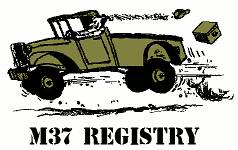m37jarhead wrote:Charles: I guess my friend was right. Little did I know when taking
the engine down.
I suppose that I have no other choice than to drop the lifters back in at
random. With no new lifters available it seems I have no other
choice.
What problems could I anticipate from the random re-installation of
the lifters?
Once again, thanks for your expert advise, it is much appreciated.
Well, not the ideal situation, but not the end of the world. I've shared thoughts with many who have done the same thing. Issues that could arise very simply depend on the amount of wear in the bores & on the lifters (tappets in the parts book). I've kept up with what went where & still had issues on at least one engine.
In your situation, here's what I would suggest. Since the cast iron bores in the block usually show more wear than the lifters themselves do; the lifters showing the least wear should go into the bores that show the most wear. In order to accomplish this, you will need to carefully measure the OD of the lifters with a high quality micrometer. Check each one at several places getting a good average OD for each. The OD measurement on a new standard lifter should be .6235"-.624". Record the information with each one set aside as you check all 12. You will also need accurate measurements of the lifter bores in the block. This can be accomplished using a high quality bore gauge. Once you have the correct ID measurement on the gauge, lock it in, remove the gauge & measure with a micrometer. Once you have checked all the bores & recorded the readings, compare the bore ID measurements with the lifter OD measurements. The object of all this as I said is to use the lifter with the least wear in the bore with the most wear & hopefully keeping excessive sidewise motion within limitations. The clearance specs are actually supposed to be no more than .001", with specs for new being .0000". The suggested extreme wear limit is .0015". To check this clearance, you'll need a dial indicator with a magnetic base, place the lifter in the bore & observe the indicator max reading as you manually move the lifter side ways. If you have a well worn engine, they will very likely be looser than .0015". The original fix for this was to ream the bores .008" oversize to get them back round & install a new oversized lifter. As far as I know, no oversized lifters exist, I found a few years ago from 1 lone source & bought all they had. No luck on any since. I even had a few at one time that were .030" oversize, never saw these again & the manuals I've seen make no mention of anything larger than a .008" over. I suppose we could have some custom made, would have to check on cost, wouldn't be cheap I'm certain.
The issues that always come up is excessive valve noise that is impossible to take out by adjusting the valves. Before it slips my mind, let me say this, very important. Be sure you surface the tops of the adjustment screws back FLAT where they contact the ends of the valve stems. This must be done on a valve grinder to be CERTAIN they are square & flat. I've seen people try to free hand it, no way can that be done accurately enough, don't risk it. The reason is the tops of the screws will indent as a result of normal wear, impossible to adjust exactly if they are left indented.
Back to the noise issue, what happens with excessive wear in the lifter bores is this. When the cam lobe strikes the head of the lifter, it needs to be pushed straight up without any sideways movement. If wear is present in the bore, the lifter will be forced upward, but with whatever sidewise loose motion area is there it will also flop over until it strikes the wall of the bore. This of course allows the upward movement to misalign or not go exactly straight up. The flop over against the bore wall & the slight misalignment as it strikes the end of the valve stem will cause valve noise to be more than normal, as the lifter is allowed to move around instead of being held in perfect alignment. More than normal noise is the first issue along with unacceptable wear as a result of sidewise movement becoming a later issue. Long story short, the more loose motion that is there, the more accelerated the wear becomes until it passes the outer limits & the engine will no longer perform acceptably. This is the worst case.
Check out everything by measuring as described above, the best policy is to check the lifter/bore clearances with a dial indicator before you disassemble the engine. You know then exactly what you are facing to correct any issues during the rebuild procedure. The bores usually wear egg shaped, it is impossible to clean that up without reaming. The block wall is thin in that area as that is usually where cracks occur that lets oil & water mix rendering blocks unservicable. I'm not sure how much meat is actually there or what any possibility might be as to whether the bores could be reamed large enough to accept & hold a pressed in sleeve. If we could accomplish that, it would be a solid, good as or likely better than new repair. This is something I should experiment with as I have 2 cracked blocks to experiment on.
Check it all out & let us know what the results are, we'll do our best to guide you from there.







